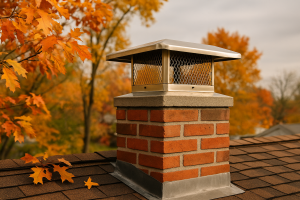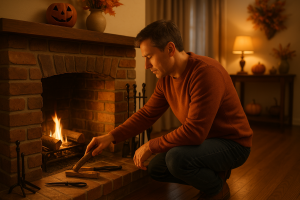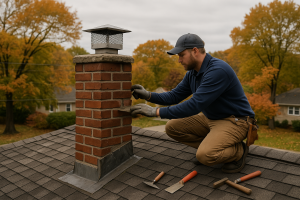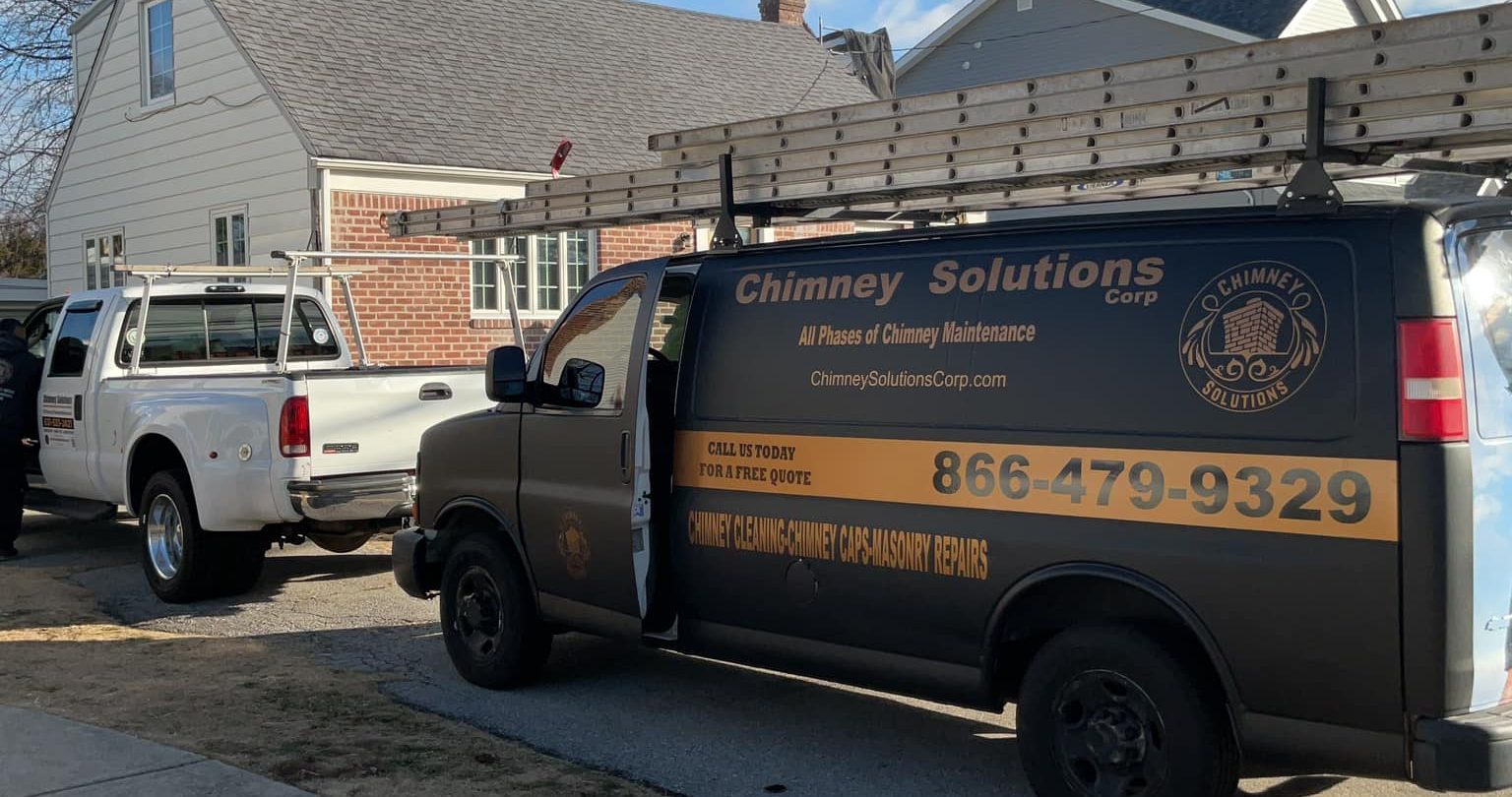A chimney leak is more than just an inconvenience—it can lead to structural damage, mold growth, and costly repairs if left untreated. Water infiltration can cause masonry materials to deteriorate, resulting in spalling bricks, cracks in mortar joints, and weakened chimney integrity. Knowing the common signs of chimney leaks and implementing preventative measures can save homeowners thousands of dollars in repairs.
In this guide, we will explore the causes of chimney leaks, how to spot early warning signs, and the best methods for prevention, including professional chimney inspection services and waterproofing solutions.
Recognizing Common Warning Signs of Chimney Leaks
Water Stains and Dark Spots
One of the most obvious indicators of chimney leaks is water stains or dark spots appearing on ceilings, walls, or around the fireplace. This can be caused by water penetration through damaged flashing, cracks in the chimney crown, or deteriorating mortar joints.
Musty Odors and Mold Growth
A musty odor in or around the fireplace often indicates excessive moisture inside the chimney. Mold growth can occur due to poor drainage, leading to health risks and decreased indoor air quality.
Musty odors around your fireplace may indicate mold growth, which can negatively impact indoor air quality. According to the EPA, mold exposure can lead to respiratory issues and long-term health problems, making early detection crucial.
Chimney Crown and Mortar Joint Deterioration
The chimney crown is designed to protect the top of the chimney from water intrusion. When cracks form, rainwater can seep into the chimney structure, causing spalling bricks and further damage. Mortar joints also play a critical role in preventing leaks, but over time, weather exposure can cause them to crack and weaken.
Rust on Metal Components
If you notice rust on metal flashing, chimney caps, or the damper, it’s a sign that moisture issues are affecting the chimney. Metal flashing deterioration can lead to severe leaks, especially during heavy rain.
Understanding the Causes of Chimney Leaks
Damaged or Improperly Installed Flashing
Chimney flashing is a piece of metal installed where the chimney meets the roof. If not properly sealed, it can allow water infiltration, leading to roof leaks and water pooling. Homeowners with a roof with metal flashing should regularly check for signs of damage.
Cracks in the Chimney Structure
Over time, exposure to rain, snow, and fluctuating temperatures can cause cracks in the chimney crown, mortar joints, and bricks. Without proper maintenance, these cracks allow excessive moisture to seep into the chimney, leading to structural integrity issues.
Chimneys are exposed to extreme weather conditions, which can lead to cracks and deterioration over time. The National Fire Protection Association emphasizes the importance of routine maintenance to prevent structural damage and reduce fire hazards.
Water Penetration Through the Chimney Cap or Chase Cover
A chimney cap acts as a protective barrier against rain, debris, and animals. If missing or damaged, water can freely enter the flue liner, leading to water stains and mold growth. Chimney chase covers on pre-fab chimney sections can also develop rust, allowing moisture to seep inside.
Importance of Regular Chimney Inspections
Frequency of Inspections
Experts recommend annual chimney inspections to catch minor issues before they become major problems. Professional chimney technicians use advanced tools like thermal imaging and moisture meters to assess water infiltration.
Routine inspections help prevent costly repairs. The Chimney Safety Institute of America (CSIA) recommends annual chimney inspections to detect issues like creosote buildup, flue damage, and water infiltration before they escalate.
What to Look for During an Inspection
A comprehensive chimney inspection is crucial for identifying potential issues before they lead to costly repairs. Whether performed as part of annual maintenance or in response to visible signs of water damage, an inspection should cover several key areas to ensure structural integrity and safe operation.
Cracks in chimney structures develop due to weather exposure, moisture penetration, and aging materials. The American Society of Home Inspectors recommends routine evaluations to detect minor cracks before they lead to extensive damage.
- Flue liner condition – The chimney liner plays a vital role in directing smoke, heat, and gases safely out of your home. Over time, cracks or deterioration in the stainless steel liner or clay flue liner can allow moisture penetration, creosote buildup, and gas leaks. A damaged flue liner can also contribute to dangerous creosote buildup, increasing the risk of chimney fires.
- Signs of mold or musty odors – A musty odor in or around the fireplace chimney often signals excess moisture accumulation, which can lead to mold growth and poor indoor air quality. A thorough inspection should check for hidden moisture pockets behind brick walls and along the chimney chase.
- Metal flashing and chimney cap integrity – Metal flashing forms a protective barrier between the chimney structure and the roof with metal components to prevent water infiltration. If flashing is loose, corroded, or improperly installed, water penetration can cause roof leaks, extensive damage, and costly repairs. Similarly, a damaged or missing chimney cap leaves the flue exposed to rain, debris, and nesting animals, increasing the likelihood of blockages and leaks.
- Mortar joints and chimney crown condition – Mortar joints help maintain the stability of masonry chimneys, but over time, weather exposure, freeze-thaw cycles, and excess moisture can cause spalling bricks and cracks. Inspecting for loose mortar, deteriorating joints, and chimney crown damage ensures that the chimney remains in peak condition and resistant to water damage.
- Signs of creosote accumulation – A dirty chimney with thick creosote buildup poses a serious fire hazard. During an inspection, a professional chimney sweep will assess whether a regular chimney cleaning is needed to reduce fire risks and improve fireplace efficiency.
- Evidence of previous repairs and material deterioration – A detailed inspection should review any previous repairs to check for cracks, leaks, or incomplete restoration work. Whether it’s chimney crown repair, flashing replacement, or masonry repairs, ensuring that past repairs are holding up helps prevent recurring chimney issues.
By addressing these key indicators during a routine chimney sweep service, homeowners can enjoy peace of mind knowing that their chimney is in peak condition, reducing the likelihood of chimney repairs and ensuring long-term safety.
Chimneys with blockages or deteriorating flue liners can contribute to poor indoor air quality. The National Institute for Occupational Safety and Health (NIOSH) highlights the importance of proper ventilation to prevent carbon monoxide buildup and moisture-related hazards.
Maintenance Tips to Prevent Chimney Leaks
Sealing Cracks and Applying Waterproofing Solutions
Applying a waterproof sealant to the external masonry helps create a barrier against rain, preventing brick mortar deterioration. This protective barrier extends the lifespan of the chimney and reduces the risk of leaks.
Applying a waterproof sealant helps create a barrier against moisture intrusion. The U.S. Department of Energy suggests weatherproofing measures, including sealing cracks, as an effective way to enhance home durability and energy efficiency.
Installing and Maintaining a Chimney Cap
A chimney cap prevents water intrusion, bird nests, and debris buildup. Chimney flashing repairs and regular maintenance ensure that metal components remain intact, preventing excessive moisture issues.
The Role of Waterproofing in Chimney Maintenance
Benefits of Waterproof Coatings
Applying a waterproofing material to the entire chimney exterior protects against water penetration and structural damage. High-quality waterproof sealants prevent excessive moisture from weakening brick walls.
Applying a waterproofing material to the chimney’s exterior helps prevent costly water damage. According to FEMA, water intrusion is one of the leading causes of structural damage in homes, making preventive measures like waterproof sealants essential.
How to Apply Waterproofing Products
A professional chimney leakage repair service will:
- Clean the chimney surface to remove debris
- Apply waterproof sealant to the masonry
- Inspect for structural issues before sealing
Professional Assessments and Repairs
When to Hire a Chimney Repair Specialist
If you notice persistent leaks, musty odors, or mold growth, it’s time to call a professional chimney technician. Experts can:
- Replace damaged flashing
- Seal cracks in mortar joints
- Conduct a Level II chimney inspection
Chimney leaks can lead to carbon monoxide buildup if ventilation is compromised. The U.S. Consumer Product Safety Commission (CPSC) warns that blocked or damaged chimneys are a major cause of carbon monoxide poisoning, underscoring the importance of professional inspections.
Choosing the Right Chimney Service Provider
When selecting a chimney repair specialist, look for:
- Certified professionals with experience in chimney leak repair
- Positive customer reviews and transparent pricing
- A wide range of services, including waterproofing and flashing repair
Climbing onto a roof to inspect or repair a chimney poses serious safety risks. The Occupational Safety and Health Administration (OSHA) advises that homeowners leave complex repair jobs to trained professionals who follow safety protocols and use proper equipment.
Frequently Asked Questions (FAQs)
How Can I Stop My Chimney from Leaking?
Prevent chimney leaks by sealing mortar joints, installing chimney caps, and applying waterproofing solutions. Regular inspections help detect early signs of damage.
Why Is My Chimney Leaking Even After Repairs?
If leaks persist, there may be an underlying issue with flashing, chimney liner damage, or improper drainage. A professional assessment can identify the root cause.
What Is the Best Time for a Chimney Inspection?
Annual inspections before the rainy season help prevent water damage and costly repairs. If you suspect moisture buildup, schedule an emergency chimney inspection.
Homeowners should also schedule chimney inspections before the heating season begins. The U.S. Department of Energy recommends annual chimney maintenance to improve heating efficiency and reduce energy waste.
Conclusion: Protect Your Home from Chimney Leaks
A leaky chimney can cause significant structural damage if left untreated. Implementing preventative measures like regular inspections, waterproofing, and professional repairs will help maintain the integrity of your chimney.
📞 Call Chimney Solutions at 866-446-0427
📍 Serving homeowners with expert chimney leak repair services



